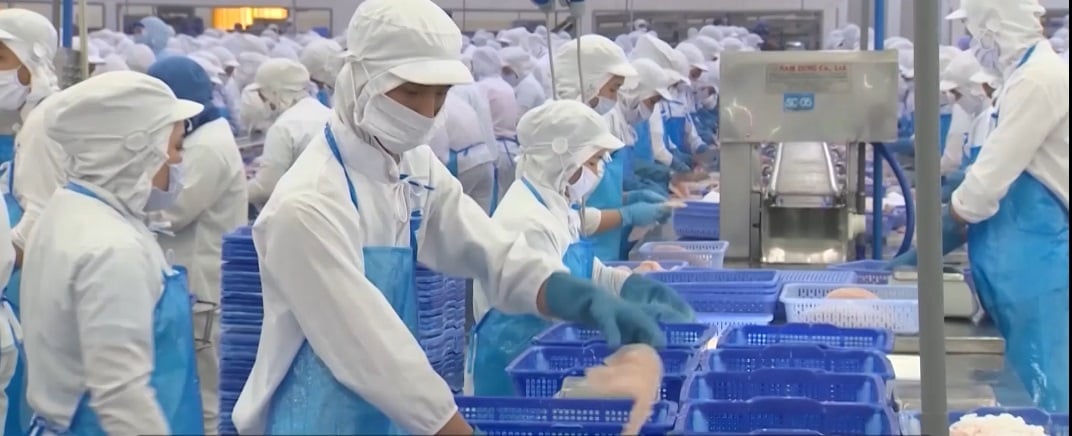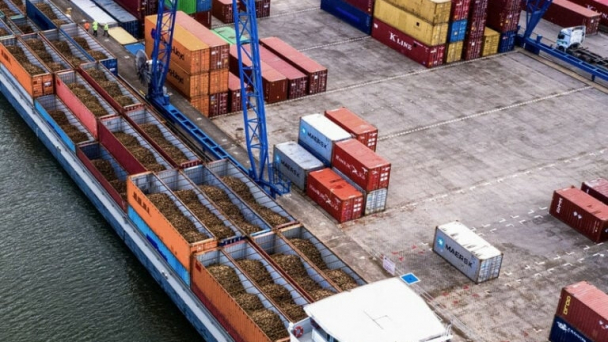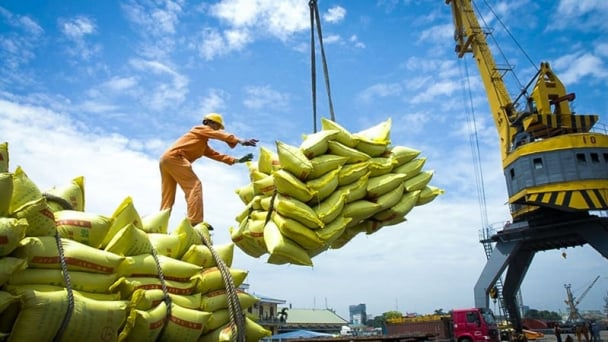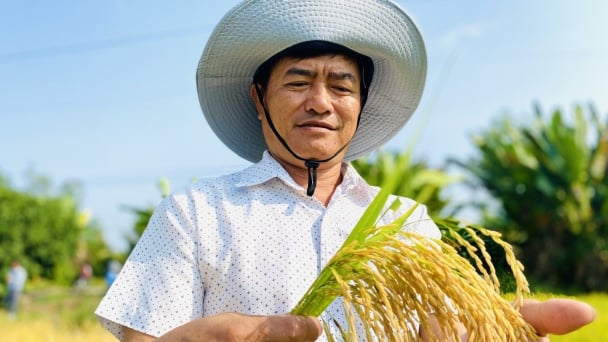May 30, 2025 | 15:22 GMT +7
May 30, 2025 | 15:22 GMT +7
Hotline: 0913.378.918
May 30, 2025 | 15:22 GMT +7
Hotline: 0913.378.918
With its position as the national hub for agricultural production, the Mekong Delta currently has hundreds of enterprises engaged in purchasing, processing, and exporting agricultural products every day. Especially, many of them operate across multiple provinces to source raw materials.
However, discrepancies in administrative procedures and regulations across provinces and cities have caused confusion for businesses, leading to increased costs and prolonged supply chain operations. With the implementation of provincial mergers, enterprises expect that raw material areas for key commodities such as rice, fruit, and seafood will gradually be planned in a more cohesive, large-scale, and clearly defined direction. This is a favorable condition for businesses to cut costs and establish stable and efficient value chains.

The Mekong Delta currently has hundreds of enterprises engaged in the purchasing, processing, and export of agricultural products every day. Photo: VAN.
According to Dr. Tran Huu Hiep, Economic Expert of the Mekong Delta region, forming larger, inter-provincial raw material areas will deliver practical benefits for enterprises in the agricultural supply and consumption chain. First and foremost, expanded development spaces and streamlined investment procedures will significantly reduce operational costs while increasing investment efficiency.
Moreover, a unified regional structure will strengthen regional linkages. In the past, agricultural production areas were fragmented by provincial administrative boundaries. By eliminating these boundaries, enterprises can leverage regional infrastructure investments, particularly in transportation, which has garnered considerable attention from the Central Government.
In particular, the mergers could enable localities to develop unified coordination mechanisms, avoiding overlaps in production support and investment promotion. As a result, the linkage from production to consumption would become closer and more transparent.
These developments contribute to boosting supply chain efficiency and enhancing the competitiveness of key agricultural products by lowering transaction costs and improving access to both domestic and foreign markets.

Assoc. Prof. Dr. Pham Le Thong, Head of the Agricultural Economics Department , School of Economics—Can Tho University. Photo: VAN.
The merging process also opens up new opportunities for cooperatives, enabling them to access policies and engage more deeply in the value chain between farmers, cooperatives, and businesses. Assoc. Prof. Dr. Pham Le Thong, Head of the Agricultural Economics Department (School of Economics—Can Tho University), said, “Cooperatives play a vital role in connecting farmers with businesses. Cooperatives can act as intermediaries for farmers, facilitating contract signings with enterprises.”
According to Dr. Pham Le Thong, the larger and more synchronous production scale makes partnerships between farmers, cooperatives, and businesses more attractive and beneficial. Specifically, for cooperatives, when procedures and policies are reduced and production scale is expanded, cooperatives will be able to achieve economic efficiency in terms of scale, thereby lowering production costs. Such mutually beneficial cooperation encourages broader participation and provides greater advantages for cooperatives.
Nonetheless, challenges remain. To fully realize these benefits, cooperatives must evolve to function like professional enterprises, equipped with capabilities in market analysis, financial planning, and strategic marketing. Many cooperatives’ management capacity is still limited. Therefore, as production areas now extend beyond commune or district boundaries, the leadership within cooperatives must be strengthened to effectively manage larger-scale operations.

Cooperatives can act as intermediaries for farmers, facilitating contract signings with enterprises. Photo: VAN.
In addition, the new administrative structure, with larger development space and streamlined procedures, will also offer numerous benefits to enterprises, especially in market expansion.
According to Dr. Pham Le Thong, the consolidation of provincial units is expected to reduce the number of management focal points, streamline administrative procedures, and, more importantly, enable more synchronous governance across localities, thereby helping businesses lower transaction and operational costs. “Reduced costs will thus enhance the competitiveness of businesses, but it also poses a challenge for businesses by intensifying intra-regional competition among businesses,” he added.
Additionally, a major obstacle to export growth has been the lack of uniformity in agricultural production, which increases operational and processing costs and reduces order viability. With large-scale, specialized production zones operating under synchronous management, companies can more easily fulfill large orders and reduce operational inefficiencies, boosting both regional competitiveness and export potential.
To capitalize on shared opportunities, Dr. Tran Huu Hiep emphasized that mutual support between businesses within the value chain is extremely essential. For instance, agribusinesses can collaborate with those in the service or tourism industries to create higher-value products. With a broader and longer-term vision, this represents agricultural development well-integrated with other sectors.
Such cross-sectoral linkages, supported by government agencies and industry associations, could foster collective competitiveness and open up new growth opportunities. However, to make this vision a reality, strategic planning must be prioritized and effectively implemented. New policies should translate into actionable steps rather than remain as aspirations.
With the policy of merging provincial-level administrative units, the Mekong Delta's agriculture is now at an important turning point in restructuring its development space. While the provincial merger presents undeniable logistical and administrative challenges, ranging from re-planning and coordination mechanisms to capacity building for farmers and cooperatives, it also offers an unprecedented opportunity.
If effectively implemented, the consolidation could transform the Mekong Delta into a more cohesive, competitive, and resilient agricultural region, better prepared for climate change, market fluctuations, and global integration.
Translated by Thu Huyen

(VAN) Merging Mekong Delta provinces contributes to the expansion of agricultural raw material areas, addressing previous constraints caused by provincial boundaries. Additionally, this expansion will reduce costs and strengthen linkages between businesses, cooperatives, and farmers.
/2025/05/29/1043-2-153730_145.jpg)
(VAN) The Government's policy to merge provincial-level administrative units opens up major opportunities for the Mekong Delta region to reshape its agricultural development strategy toward large-scale production, effective regional linkages, and sustainability.

(VAN) The mutual export of agrifood products between the European Union (EU) and the United Kingdom (UK) must occur again without certification, border controls or other red tape. This was agreed at the UK-EU summit.
/2025/05/22/5121-2-173645_677.jpg)
(VAN) NBSAP Tracker identifies strengths and areas for improvement in the National Biodiversity Strategy, based on each region’s priorities and capacities.

(VAN) The draft amendment to the Circular on rice export trading stipulates a periodic reporting regime for rice exporting enterprises.

(VAN) Dong Thap farmers attained an average profit margin of 64% during the summer-autumn 2024 crop (first season), while An Giang and Kien Giang farmers followed with 56% and 54%, respectively.